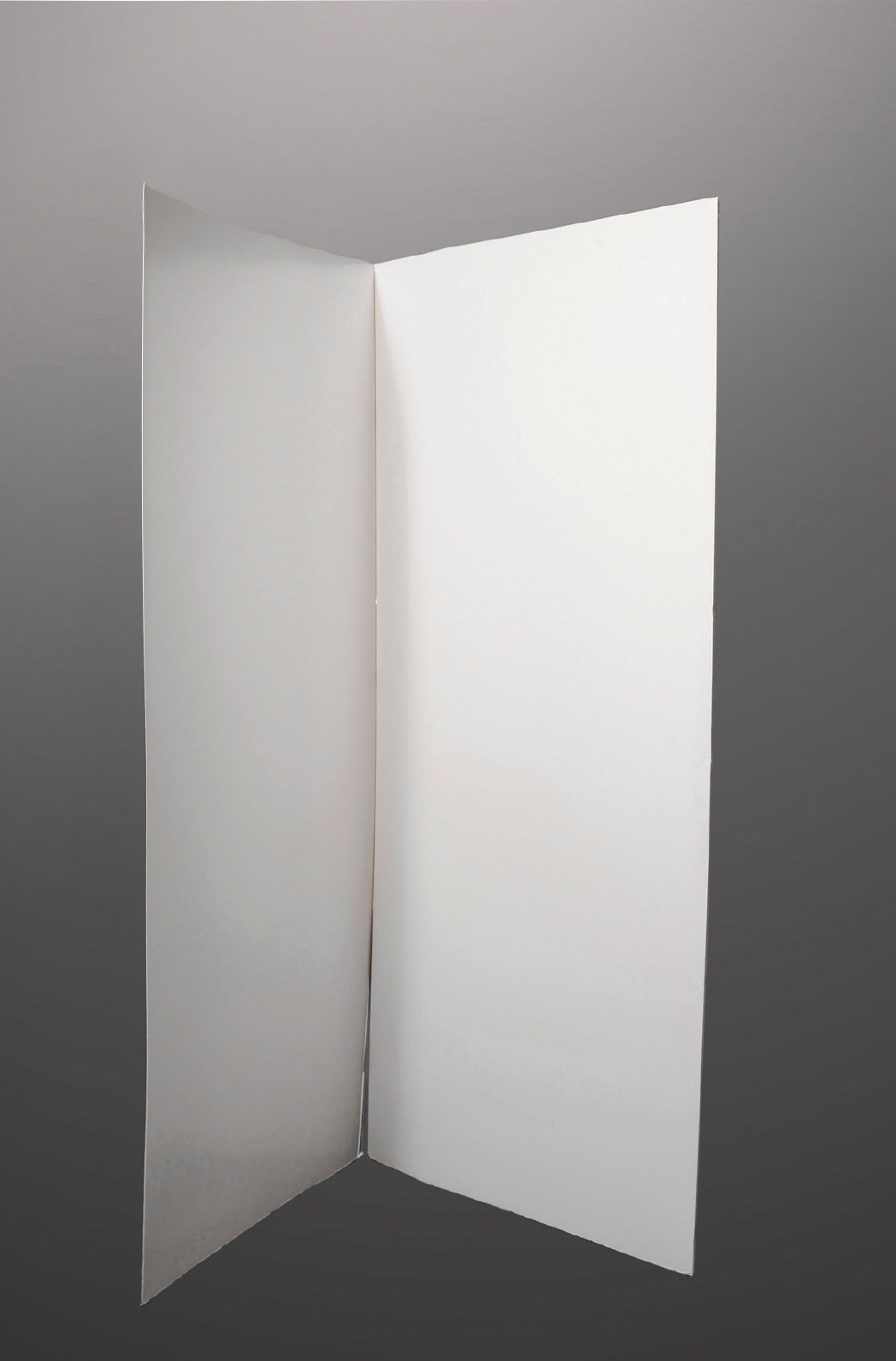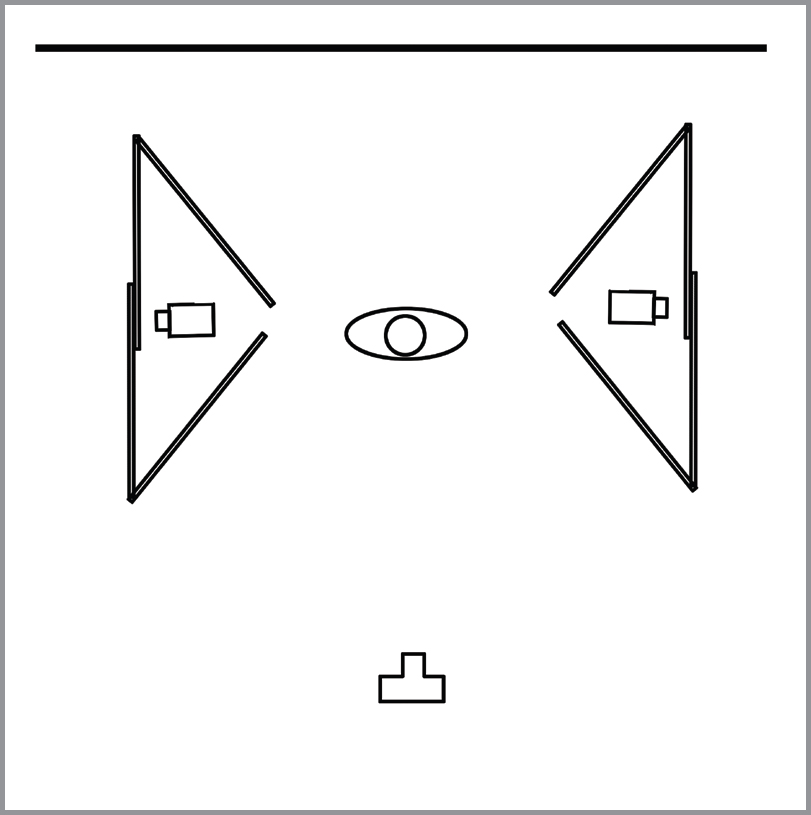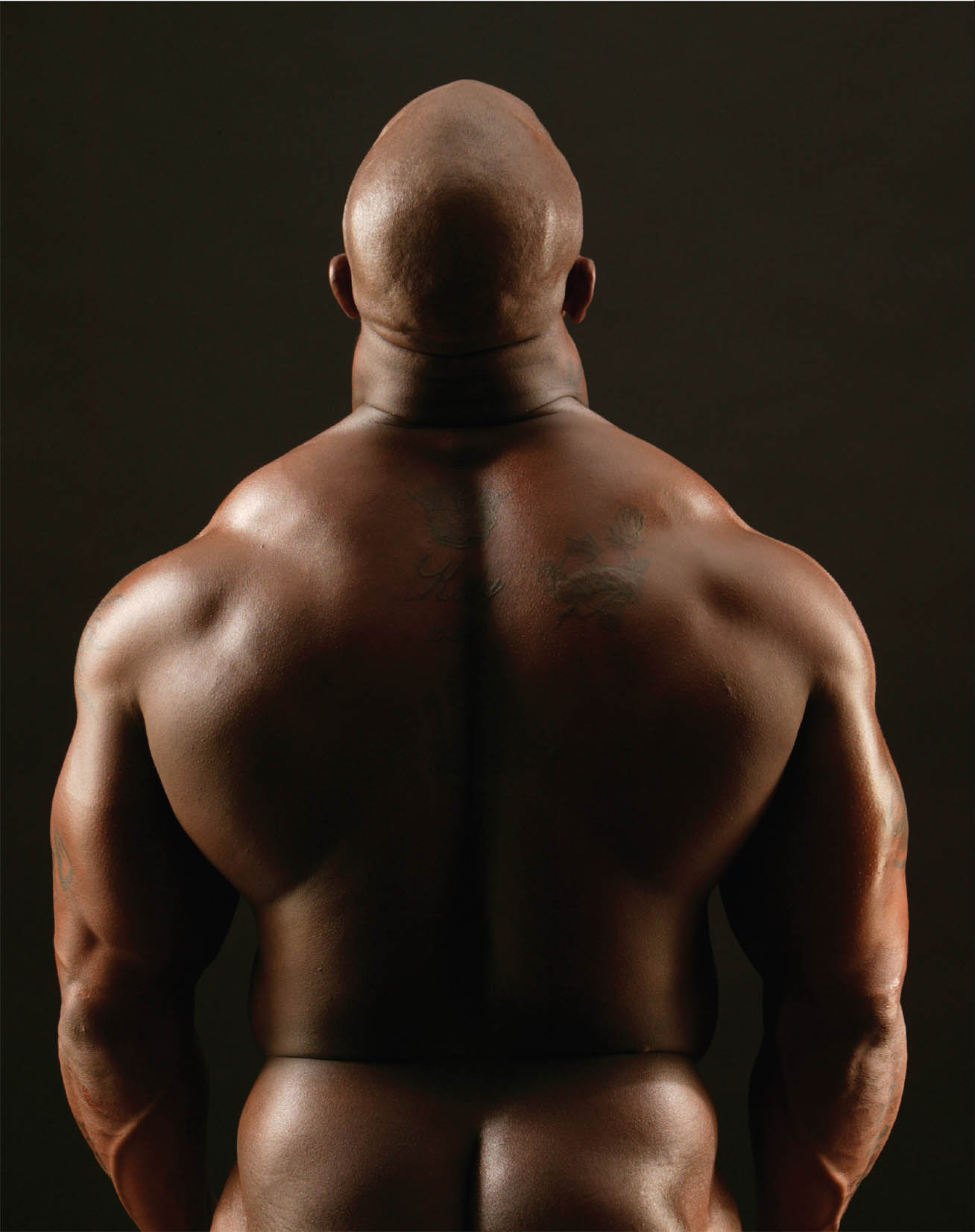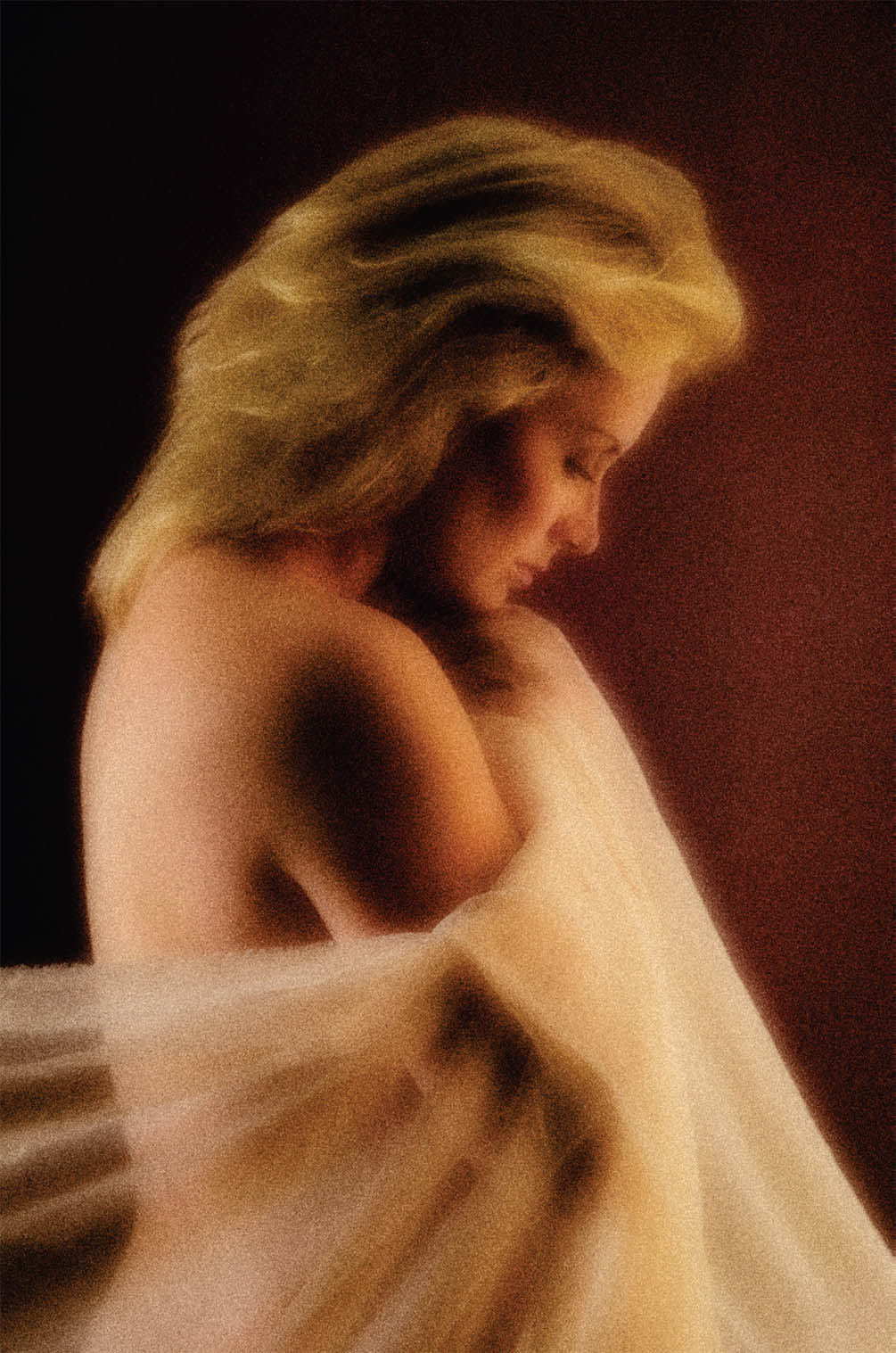You’ll find references throughout these pages, and in most of my other books, to a “bookend.” A bookend is a simple homemade light modifier. To build one, take two pieces of 4×8-foot white and/or black foamcore and tape them together along one common vertical edge. Also known as a V-card, and perhaps a few other names, this freestanding modifier is usually used to lighten (“open up”) or darken shadows, depending on which side faces the subject.
While I use bookends for their traditional use often, I also like to turn them into a light source unlike anything else in the studio. At approximately $20 per foamcore sheet, you will need to invest around $160 for the 8 sheets you will need. Trust me. You’ll know you’ve not wasted your money once you see your first result.

It doesn’t get much simpler than this: two pieces of foamcore taped together along a vertical spine.

Note how the four bookends are positioned to create narrow slits for the light.

Here, bookends allowed me to emphasize the hard musculature of a professional body builder.
I combine two bookends to create an almost closed V, and do this twice. I place one bookend on each side of the subject just off-camera because I want the spread of light to be minimal. The amount of light that leaves the V depends on how wide the two exit panels are spread.
I place a strobe with a parabolic reflector inside each set of bookends, set high to bounce down into the upper third of the back panel. Even though I’m creating something unorthodox, I still want to create a proper nose shadow, should a pose require one.
There’s another thing to consider, too, regarding shadows. Our primal memories all include lighting from a single source from above, the sun. While it’s not blasphemy to suggest a light source could originate from, say, the center of the earth, it might be a tough sell psychologically.
If you are even remotely like me, you’ll look at this goofy little trick and ask yourself, “What if . . . ?” That is the operative question, isn’t it?

Bookends are also perfect for lighting soft, feminine forms. Note how this simple light so beautifully accents the subject’s profile and hair. The grain effect was added in postproduction.

Here, I used only one set of bookends for white light and a second light wrapped in a deep-blue gel, aimed at the ceiling to light the room. The background was white seamless and easy to color. I made a very small slit between the flaps of the remaining bookends and custom white balanced for the mix of white and blue light. My custom white balance changed the hue of the blue light slightly, but left the small slit of white light that fell on my model looking quite true and natural.